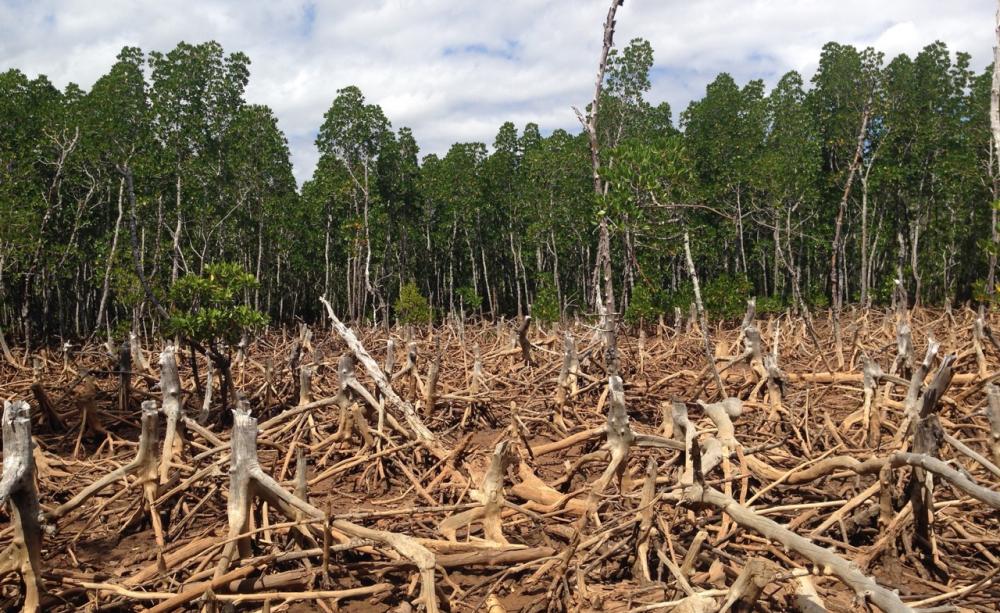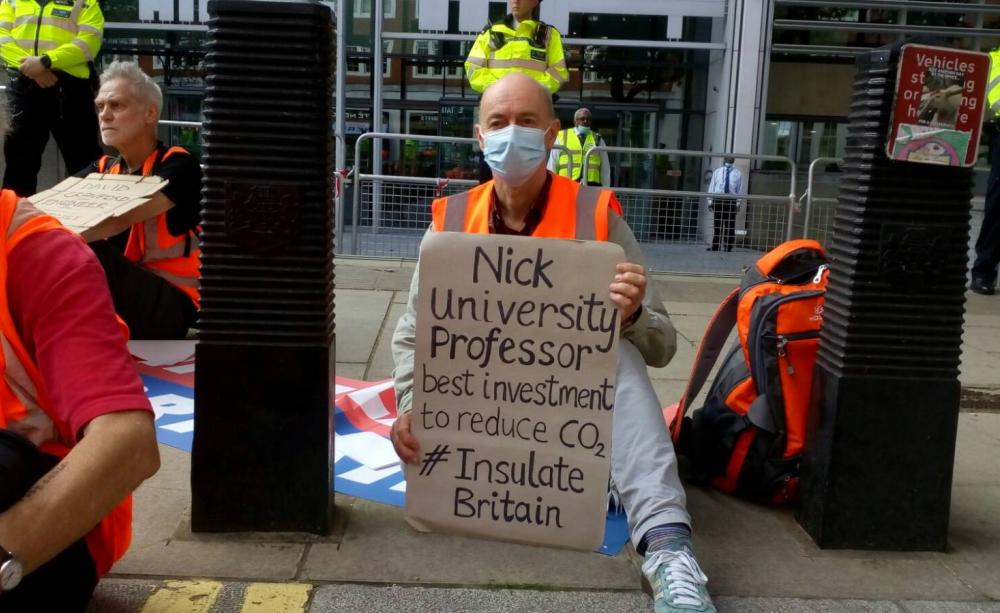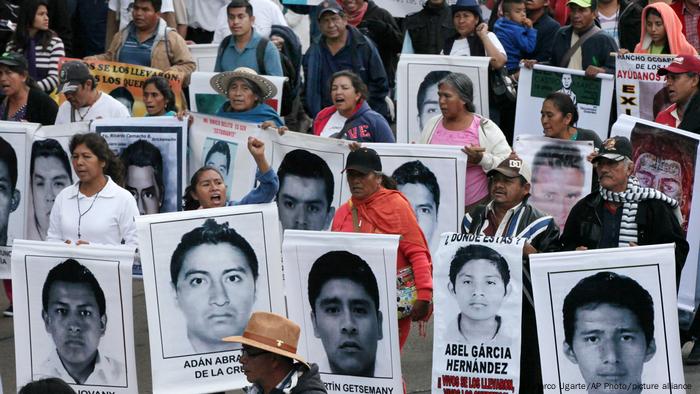For philosopher G.W.F Hegel, history advanced in terms of the development of the spirit seen from a dialectical point of view (G.W.F Hegel, 1977; Nisbet, 1980, p. 25).
Wellbeing
In the case of Adam Smith, progress was a byproduct of the “invisible hand’s” actions that assured both stability of the economic system and progress (Smith, 1776).
Later, marginalist economists proposed the Pareto Optimality, as a mechanism of improvement, or progress, in order to attain the most efficient market allocation of resources (Buchanan, 1962).
Such allocation can, however, be problematic if there is a risk of a high unequal distribution of resources or income, which can affect the possibility to improve society’s level of wellbeing.
If progress is “defined as an improvement in the well-being of human beings” (Sulkowski, 2016, p. 2), it becomes thus useful to add a conception like wellbeing, as a means to evaluate the notion of GDP in terms of its power to measure progress. That is, by also acknowledging the different conceptions on wellbeing that exist.
The branch of welfare economics provided one of the definitions on wellbeing when it acknowledged the importance of measuring material welfare through the work of economists like Marshall, Hicks, Pigou, Edgeworth, and Pareto, who included the concepts of wellbeing, utility, and social welfare in the economics analysis (Myrdal, 2017, pp. 208–210).
Voters
Likewise, there are other measurements of wellbeing that come from pluralist or de-colonial approaches which enrich the debate on development and progress.
The principle of Pareto Optimality and efficiency was taken by marginalist economists as a ground principle for measuring social welfare or wellbeing.
For welfare economists, As Pigou affirms, “…the one obvious instrument of measurement available in social life is money. Hence, the range of our inquiry becomes restricted to that part of social welfare that can be brought directly or indirectly into relation with the measuring-rod of money. This part of welfare may be called economic welfare.” (Pigou, 1920, p. 11).
On the one hand, this principle can be found in national policies and institutions, such as the U.S. National Bureau of Economic Research which measures wellbeing through the economic performance of society (Syrquin, 2016, p. 582).
On the other hand, welfare improvements can enter in contradiction with political interests, as some governments have boosted GDP in order to increase their likelihood for the current ruling party to be voted again in the next election, assuming voters to be short-sighted and responsive to GDP measures (Alt & Lassen, 2006).
Welfare
Additionally, GDP measurements do not necessarily measure wellbeing. For instance, if one measures the increase of GDP between the decades of 1950 and 1960, it can be seen how GDP increased but subjective well-being remained constant (Stiglitz et al., 2010, pp.21-22).
Under welfare economics’ concept of wellbeing, progress is made in the context of a Pareto improvement in situations of inefficiency, that is, in a scenario of inefficient allocation of resources (Hausman et al., 2016).
Yet, a highly unequal distribution of income in a society can occur as a consequence of a Pareto improvement. As a result, measurements of societal welfare were proposed, such as the Social Welfare Function, based on an ordinal utilitarian conception (Myrdal, 2017).
The function however does not consider the values, wants and desires of the individuals, that depend on the social and historical context (quote here).
In other words, it does not consider that there can be different interpretations of welfare, such that a low welfare scenario in a certain society, can be regarded as a high welfare scenario in a different one, when taking concepts like sustainability and social justice into account.
Wealth flows
When attempting to include environmental factors, indicators like the Sustainable Economic Welfare (ISEW) and the Genuine Progress Indicator (GPI) were designed to deduct the effect of environmental pollution and natural depletion.
The divergence between the GDP and ISEW or GPI means that GDP by itself is limited as an indicator for well-being and progress nowadays. Another indicator, the HDI (Human Development Index), was additionally formulated by including education and life expectancy along with GDP, to measure changes in well-being (quote here).
Nordhaus and Tobin’s Sustainable Measure of Economic Welfare (SMEW) were created to deduct private consumption and monetary estimations of non-positive welfare factors to correct elements that were not considered by GDP.
The main critique is that these indicators do not set a clear limit on growth, which means that it can go beyond the ecological system’s capacity.
In turn, indicators like Osberg and Sharpe’s Index of Economic Wellbeing were developed, to include measures of consumption, wealth flows, protection against social risks, and costs of CO2 emissions per capita (Stiglitz et al., 2010).
Progress
Although GDP has not been dropped out in these indicators, it has acquired a much less important position than it previously had.
In conclusion, GDP has been developed as an element to measure wellbeing and progress in a society, supported on assumptions on the mechanisms by which wellbeing can be achieved.
One of the main assumptions come from neoclassical economics’ Pareto Optimality, which strives for an overall efficiency, that may as well lead to a scenario of high inequality or high environmental degradation.
This in turn, may introduce a trade-off between efficiency and other values like equity, sustainability, or justice.
If efficiency is chosen to be more important other values, then GDP can be a good indicator for progress, but if other values are more important, then GDP’s usefulness to measure progress becomes problematic.
Ecological economics principles and critique of economic growth perspective
Ecological economics argues that neoclassical economics lacks a correct conceptualization of nature and other systems, which in turn develops an endless growth perspective that causes a situation of welfare reduction (Faber, 2008, p.2).
Most importantly, ecological economics modifies the efficiency principle when it introduces the economic system within a complex network of macro systems, which are underpinned by other principles, like ecological ones (Spash, 2012).
This view contrasts with the traditional neoclassical view, which is based on marginalist perspectives of utility, profit maximization and production optimization, performed in a closed economics system that is reduced to homes and firms (Mankiw, 2011), without including nature as an additional agent.
For ecological economics, the natural processes of waste management, resource cycles, energy cycles (ALIER & JUSMET, 2000, pp. 22–74) and biosphere boundaries (Røpke, 2020) have to be included as a grounding principle for the understanding of the economic system (Røpke, 2004).
For that reason, it is argued that GDP measures possess an incorrect inclusion of negative externalities, which are external distortions of the market’s equilibrium and efficiency.
Usefulness
Furthermore, this proposes a different view on economic growth, as the economic system is to be studied as a part of global ecological system that not only restricts the possibilities of endless growth, but also affects the notion of well-being that was previously associated with growth (Røpke, 2020, p.8).
As Herman Daly (1991) pointed out, the full costs of growth are not included in the marginalist or neoclassical conception, which makes it an incomplete measure.
By applying a marginalist logic, Daly argues: “Growth in GNP should cease when decreasing marginal benefits become equal to increasing marginal costs” (Daly, 1991, p. 99).
A new guiding principle for growth is proposed, which is based on a steady-state economy conception where the GDP-based assumption of “more is better” is replaced by “enough is best”, by proposing a limit to the growth path (ibid., p.6).
As a response to this, an indicator called the green GDP tried to give value to environmental inputs and outputs into the economic system. Although, in the case of outputs, the measurement becomes more speculative, bringing again the question of its usefulness. In the words of Stiglitz et al. (2010):
Justice
Valuing environmental inputs into the economic system is the (relatively) easier step. Since these inputs are incorporated into products that are sold in the marketplace, it is possible (in principle) to use direct means to assign a value for them based on market principles.
In contrast, as pollution emissions are outputs; there is no direct way to assign a value to them. All the indirect methods of valuation will depend to some extent on 'what if' scenarios.
Thus, translating valuations of degradation into adjustments to macro-economic aggregates takes us beyond the realm of ex-post accounting into a much more hypothetical situation.
The very speculative nature of this sort of accounting explains the great discomfort and strong resistance among many accountants to this practice. (Stiglitz et al., 2010, p. 22)
The framework of ecological economics additionally contributed to the wellbeing conceptualization, as Faber (2008) summarizes, with the inclusion of the concepts of nature, justice, and time based on thermodynamical rules.
Pollution
As a result, mainstream economic theories can be limited in measuring wellbeing by not including a definition of justice in their measurements.
Although welfare economists have strived for a value-neutral theory, Streeten (1955) shows that their alleged neutrality hides the ethical and political stance that unavoidably underpins neoclassical and welfare economics assumptions.
Myrdal (1955) complimented this argument by explaining that separating between scientific economics and political valuations, hides the intrinsic value judgement that welfare economists exercise whenever they give their opinion on “what ought to be”, which is in other words, what the Pareto Principle aims to show.
Given that neoclassical economics regards nature as a subsystem and as a means to achieve a steady economic growth (Faber, 2008, p.2), it presents limits to the inclusion of externalities coming from other systems.
In a scenario of internalization of externalities such as an introduction of Emission Trading Schemes (ETS), a reduction of environmental pollution can be fostered, which would initially point to an improvement of social welfare.
Markets
Nevertheless, evidence states that the outcomes of such policies have not been enough to revert climate change policies (Posner, Eric; Weisbach, 2010, p. 59), because economic growth has been set to be more important than attaining the lowest level of pollution.
For that reason, ecological economics advocates for the inclusion of a deeper principle of sustainability transitions in the measurement of wellbeing and economic progress.
This means, including biophysical foundations, the origins of capitalist relationships, property relations for distribution, dependence of markets on governments and governance challenges in the economics design.
Transition
The purpose of this is to holistically encompass environment and justice challenges with a more central role of distributional institutions and governance (Røpke, 2020).
In conclusion, ecological economics presents a complimentary view to welfare economics arguments, displaying a new set of variables and principles that welfare economics and sole GDP measurements have left aside.
Particularly, as environmental issues are seen as intertwined with social and economic problems, more holistic indicators are needed, in order to include hidden costs and important values, that are directly related to what well-being and progress are defined by individuals.
A focus on other targets different to economic growth becomes also relevant to make this transition to other indicators possible.
Buen Vivir as an indigenous and postcolonial critique to GDP
The concept of Buen Vivir, which means 'good life' in Spanish, is also known by other names as “Sumak Kawsay” or “Sumaq Qumaña” and represents a collective of world visions and philosophies of life based on ancestral wisdom, indigenous practices and globalization critics that have one notion in common.
The attainment of a good life based on the pillars of the human being, the community, and Mother Nature.
The principle of cohabitation is drawn as a fundamental concept (Gudynas, 2011), which means that economic development or progress can only be achieved if communities and human beings live in harmony with Mother Earth.
This perspective rejects economic growth as a measurement of progress and promotes a set of principles that eliminate GDP as a guiding concept, similar to A-growth perspectives (Van den Bergh, 2011).
Moreover, the philosophy draws a direct statement against the market economy, which is seen as a cause of the fragmentation between the relationships between human beings and nature (Radcliffe, 2012), with physical and ecological implications.
Ethnical pluralism
To support the argument, the A-growth critique of GDP de-growth perspectives may become useful, as it shows that even if GDP is controlled, it fosters environmental degradation in the short run by having a combination of less output with more inputs and use of energy and resources (van den Bergh, 2011, p.2).
Thereby, a structural change is proposed in which the needs and decisions on the levels of output are based on a new production system, that is delinked from market-based relationships that are based solely on the material requirements of a good life.
A first response to the principles of Buen Vivir comes from the evaluation of its implementation in the countries of Ecuador and Bolivia, where many academics like Gudynas (2011) and Acosta (Acosta, 2013; Acosta et al., 2012) objected that the objective of harmony was not respected in the context of National policies.
Moreover, cohabitation with Mother Earth was not evidenced when large scale mining and the amazon forest degradation was fostered, while several capitalist practices and structures of power remained unchanged, like Agrarian elites and concentration of means of production in few hands.
Finally, in the State practices, the de-colonial principles of ethnical pluralism and linguistic diversity underwent several contradictions by coexisting with the rooted market-based practices (Ranta, 2018).
Policy
In Ecuador, Buen Vivir was included as a guiding principle for the Development Plan of president Rafael Correa between 2013 and 2017, having previously influenced the constitution of the country in 2008.
An excerpt says the following: ‘‘We...Hereby decide to build a new form of public coexistence, in diversity and in harmony with nature, to achieve the good way of living, the sumak kawsay’’ (Republic of Ecuador, 2008, p. 8).
In practice, GDP was not abandoned as a public policy measurement, although well-being was no longer seen a uniquely tied to GDP but also tied to cultural pluralism and linguistic diversity.
In the words of Radcliffe (2012) new principles were added such as “… amplifying collective rights, strengthening intercultural education, and recognizing Spanish, Kichwa and Shuar as official languages” (Radcliffe, 2012, p.244).
The practical example of Ecuador and Bolivia underpins the reason why Waldmüller (2014), Radcliffe (2012) and Ranta (2018) identified several structural contradictions, which support the claim that if GDP measures are not questioned as a guiding policy, they may clash with other principles that are important to other worldviews.
Community
In practice, market based inequalities and postcolonial hierarchies were not fully addressed, evidencing a continuation in the cultural, political, social and epistemological oppression of the indigenous ways of life and ancestral practices (Radcliffe, 2012, p.246).
If wellbeing is to be conceived from a relational and ontological perspective associated to the emancipation of indigenous understanding of life (Waldmüller, 2014, p. 8), a new worldview needs to be adopted.
Nevertheless, Buen Vivir constitutes an important theoretical critique of GDP by presenting the values of pluralism, ontological-relational concept of the human being and the three-pillar harmony for a measurement of social welfare and individual wellbeing.
Regarding what a good life can be, some economists have formulated indicators alongside GDP, to include the need for more leisure (Van den Bergh, 2011, p.884), fewer working hours (Kallis, 2010. P876) and a safe environment in its measurement.
However, such indicators obliterate one of the pillars from Buen Vivir philosophy, which is the community.
Guiding principle
That is, the definition of what a good life is, cannot be arbitrarily determined by the amount of leisure time, working hours or safe environment, but by the level of connection between all the human beings living in a place-based community and their spiritual connection to nature.
As a final argument, Buen Vivir can provide several alternatives to GDP, that include practical measures of the harmonical relationship between human beings, the community and nature.
Some comprehensive indicators, in terms of environmental and community matters, have attempted to propose a subjective measure that accounts for the ratio of the people involved in environmental practices in the whole community and their level involvement (Pallaroso et al., 2016).
Moreover, some authors have proposed a combined measurement of green zone access, estimation of waste and pollution produced per person, average land property, level of food sovereignty and environmental viability (Herrero, 2011; Sempere et al., 2010).
This could represent a possibility of reconciliating the Buen Vivir worldview and the government’s public policy framework. Most importantly, including the population in the formulation of the indicators must a guiding principle if a Buen Vivir conception is to be followed.
Indigenous
In conclusion, Buen Vivir as an alternative, de-colonial, and pluralist perspective, shows the limitations of GDP as a measurement for progress, by considering the pluralist elements of a good life.
Firstly, the principles of harmony between human beings, the community and nature indicate that an increase of GDP does not necessarily foster a development of the three pillars.
Moreover, even if output production is left aside, consumption can still be harmful to progress if it is not respectful of the three pillars harmony.
Although indicators can attempt to include pluralist principles, the relational and ontological nature of indigenous knowledge is not really quantifiable, which means that a different worldview to the western one, is required to understand it.
Equity
I have discussed the limits of measurement from GDP as the best indicator for progress and wellbeing. For a delimited discussion, a conceptualization of the definition of progress was presented, such that it was linked to the indicators of well-being and economic welfare, engaging in the underpinnings of such concepts from neoclassical economics, welfare economics, ecological economics and Buen Vivir.
The first part presented the core assumptions that underlie GDP growth as a measurement for progress and efficiency, which is the Pareto Optimality principle.
If wellbeing improvement is tantamount to progress, Pareto efficiency principles become the core assumptions supporting the neoclassical belief in GDP. In that case, it was shown that as the Pareto efficiency does not account for situations of inequality or environmental degradation, (Stiglitz et al., 2010; van den Bergh, 2011).
Such limitations have led to the creation of new indicators like the ISEW, HDI, GPI and others, which have included new variables and externalities for the measurement of welfare an ultimately for progress.
However, as values like justice, equity and sustainability have become more relevant to wellbeing, indicators that include GDP as a central measurement have started to become limited.
Harmony
A second argument consisted of presenting the ecological economics conception of the intertwining of the economic and ecological systems to assess the notion of endless growth that underpins the belief in GDP’s relevance.
Ecological economics pointed out the lack of a holistic view in the GDP, which means that it has a limited measurement of negative externalities and environmental impacts that can be detrimental to measure welfare and progress (Alt & Lassen, 2006; Daly, 1991; Røpke, 2020).
Although environmental economics has tried to include this, the belief on endless growth and lack of understanding of the economic system limits, questions the validity of GDP as a main indicator for welfare.
Buen Vivir provided a third argument from a decolonial and indigenous perspective to understand that economic growth can be directly associated to detriments in human, social and nature’s wellbeing.
This happens, as a decrease of wellbeing occurs in if there is a break in the ancestral harmonization of Human Beings, the Community and mother nature (Acosta, 2013; Gudynas, 2011).
For this conception, GDP is not only harmful for progress but also needs to be eliminated as a societal target, as it is associated with fragmentating market relationships that cause a brokage of the harmony between human beings and nature.
Pluralist
In conclusion, given that progress has been linked to the improvement of wellbeing in society, GDP as a measurement can be proven to be either a contributing or damaging factor.
This would depend on the core assumptions on the concept, be it the Pareto Optimality, the intertwining of the economics and ecological systems or the harmony of human beings and nature.
Nevertheless, as certain values grow in importance in our society, such as social and environmental justice, equity, and community self-determination, GDP can be questioned as a sole indicator for progress.
Moreover, if the measurement of wellbeing is defined by a community’s own priorities, then, as it happens in indigenous communities, GDP will lose its value to determine what progress is, while pluralist worldview will lead the way to an open and ongoing debate on the concept.
This Author
David Caicedo Sarralde is a masters student of politics, economics and philosophy at Hamburg University and has published in peer-reviewed journals on the topics of political economy, indigenous studies, and development.
Bibliography:
1. Acosta, A. (2013). El Buen Vivir. Sumak Kawsay, una oportunidad para imaginar otros mundos. Icaria Editorial.
- Acosta, A., González, J., Arkonada, K., & Prada, R. (2012). Un Estado, muchos pueblos La construcción de la plurinacionalidad en Bolivia y Ecuadoritle. Icaria Editorial.
- ALIER, J. M., & JUSMET, J. R. (2000). Ecological Economics and Environmental Policy (spanish ed). Fondo de Cultura Económica.
- Alt, J. E., & Lassen, D. D. (2006). Transparency, Political Polarization, and Political Budget Cycles in OECD Countries. American Journal of Political Science, 50(3), 530–550. https://doi.org/10.1111/j.1540-5907.2006.00200.x
- Daly, H. E. (1991). Steady-State Economics (2nd Ed.). Island Press.
- Faber, M. (2008). How to be an ecological economist. Ecological Economics, 66(1), 1–7. https://doi.org/10.1016/j.ecolecon.2008.01.017
- Gudynas, E. (2011). Buen Vivir: Today’s tomorrow. Development, 54(4), 441–447. https://doi.org/10.1057/dev.2011.86
- G.W.F Hegel. (1977). Phenomenology of spirit. Clarendon Press Oxford. https://doi.org/10.2307/j.ctv105b98m
- Hausman, D., MPherson, M., & Satz, Debra. (2016). Economic Analysis, Moral Philosophy, and Public Policy,. Cambridge University Press, 2016,. https://doi.org/10.1017/S0266267117000190
- Herrero, C. (2011). La Medición del Bienestar y el Bien Vivir. University of Alicante, Spain.
- Mankiw, N. Gregory (2011). Principles of Economics. Cengage learning. 6E.
- Myrdal, G. (2017). The Political Element in the Development of Economic Theory. Routledge Taylor & Francis. https://books.google.fi/books?id=xywrDwAAQBAJ
- Nisbet, R. (1980). The idea of progress. Transaction Publishers.
- Pallaroso, A., Alexander, F., Casanova, P., & Pucará, C. (2016). La Medición Del Buen Vivir Rural. Estudio De Caso En El Cantón Pucará, Provincia De Azuay, Ecuador. Revista Venezolana de Análisis de Coyuntura, XXII(1), 111–134.
- Pigou, A. C. (1920). The economics of welfare. Macmillan. https://doi.org/10.4324/9781351304368
- Posner, Eric; Weisbach, D. (2010). Climate change Justice. Princenton University Press.
- Radcliffe, S. A. (2012). Development for a postneoliberal era? Sumak kawsay, living well and the limits to decolonisation in Ecuador. Geoforum, 43(2), 240–249. https://doi.org/10.1016/j.geoforum.2011.09.003
- Ranta, E. (2018). Vivir bien as an alternative to neoliberal globalization. Taylor & Francis.
- Republic of Ecuador. (2008). Constitution of the Republic of Ecuador. https://www.oas.org/juridico/pdfs/mesicic4_ecu_const.pdf
- Røpke, I. (2004). The early history of modern ecological economics. Ecological Economics, 50(3–4), 293–314. https://doi.org/10.1016/j.ecolecon.2004.02.012
- Røpke, I. (2020). Econ 101—In need of a sustainability transition. Ecological Economics, 169(October 2019), 106515. https://doi.org/10.1016/j.ecolecon.2019.106515
- Sempere, J., Acosta, A., Abdallah, S., & Ortí, M. (2010). Enfoques sobre bienestar y buen vivir. FUHEM Cip ecosocial. https://doi.org/10.1016/0042-6822(83)90300-8
- Smith, A. (1776). An Inquiry into the Nature and Causes of the Wealth of Nations. McMaster University Archive for the History of Economic Thought. https://econpapers.repec.org/RePEc:hay:hetboo:smith1776
- Spash (2012). New Foundations for ecological economics. Ecological Economics. 77 (1), 36-47.
- Stiglitz, J. E. (1991). The invisible hand and modern welfare economics. NBER Working Paper, 3641, 1–48.
- Stiglitz, J. E., Sen, A., & Fitoussi, J.-P. (2010). Mismeasuring Our Lives: Why GDP Doesn’t Add Up. 1, 136.
- Streeten, Paul (1955). Recent controversies. In: Myrdal. The political element in the development of economics theory (pp.208-218). Cambridge, Massachusetts. Harvard University Press.
- Sulkowski, L. (2016). Chapter 1: The meaning of management. Epistemology of Management, 1–24. https://doi.org/10.3726/978-3-653-02219-3/4
- Syrquin, M. (2016). A review essay on GDP: A brief but affectionate history by Diane Coyle. Journal of Economic Literature, 54(2), 573–588. https://doi.org/10.1257/jel.54.2.573
- van den Bergh, J. C. J. M. (2011). Environment versus growth - A criticism of “degrowth” and a plea for “a-growth.” Ecological Economics, 70(5), 881–890. https://doi.org/10.1016/j.ecolecon.2010.09.035
- Victor, P. (2010). Questioning economic growth. Nature, 468(7322), 370–371. https://doi.org/10.1038/468370a
32. Waldmüller, J. (2014). Buen Vivir, Sumak Kawsay, ‘Good Living’: An Introduction and Overview. Alternautas,1(1). https://static1.squarespace.com/static/5362250de4b0e6ed7cf86ed1/t/563128f3e4b0cdd5c7a32ca2/1446062323725/02-v1i1JWaldmuller1.pdf













